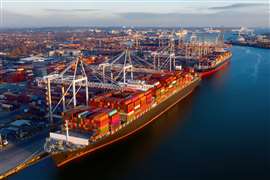Hitachi launches used equipment initiative
25 July 2016
Construction equipment manufacturer Hitachi Construction Machinery Europe has introduced an inspection programme for used excavators and wheeled loaders.
It said the Hitachi Premium Used programme applied to Hitachi medium and large excavators with 5000 hours or less than five years old, mini excavators with less than 3500 hours, and all ZW-series wheeled loaders above 125hp (93kW).
It said these machines would undergo an inspection and refurbishment process carried out by an authorised Hitachi dealer using genuine parts and consumables.
In addition, it said scheduled oil sampling was completed and maintenance records were available via Global e-Service, Hitachi’s remote machine monitoring website, and the machines would also be painted if required, and the undercarriage and tyres were guaranteed to have less than 50% wear.
Hitachi said these machines would also be covered by its six-month/1500-hour powertrain and hydraulics warranty. The company said the used machines could be viewed on its website, which also offered a comparison feature to check the hours, specs and pricing of similar models.
“These inspections ensure the high quality of Hitachi used equipment is maintained throughout Europe,” said Tom van Wijlandt, manager of service business support at HCME.
“Customers travelling to, or working in, different countries can benefit from the same Premium Used conditions and will be supported by the local authorised Hitachi dealer, irrespective of where they are on the continent.”






